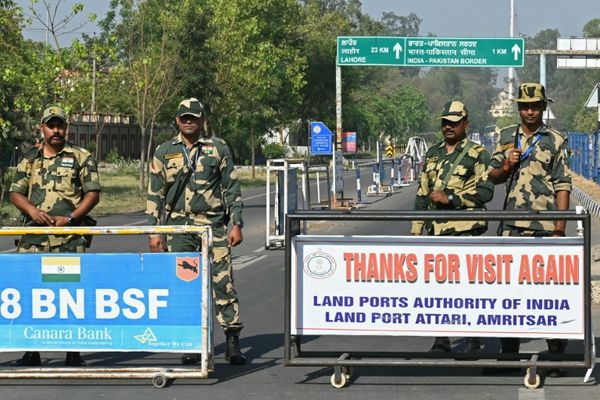
It’s been almost seven decades since the 1955 Avadi session of the Congress where the party adopted a “socialist pattern of society” as one of its goals. And nearly five decades have passed since a slew of statist measures culminated in the Indira Gandhi government bringing in the 42nd amendment to the Constitution in 1976. Among other things, the amendment inserted the word “socialist” in the preamble.
The momentum, however, saw a shift with almost three-and-a-half decades of economic liberalisation and reforms. But over the last year or so, Congress leader Rahul Gandhi’s recasting of the social justice plank through a caste census, with a contentious redistributive tinge, has now entered the polemic of the Lok Sabha poll campaign.
In essence, this seems to be the current Congress leadership’s tentative move to test the waters for a new coalition in post-Mandal politics. It draws on some of the discontents of the liberalisation process, though without departing from the core of the reforms consensus.
Gandhi has asserted his party’s objectives of using a caste census to recast resources, and reportedly dropped hints about a financial survey of ownership of wealth. In the process, he’s set off a lot of chatter about the party’s intent. This was further fuelled by a statement by Sam Pitroda, chairman of the Indian Overseas Congress, in which he batted for an inheritance tax.
Importantly, such a tax has not found a place in the party’s manifesto. The Congress swiftly distanced itself from Pitroda’s statement.
For many with a longer historical arc, this may seem like a re-radicalisation, stemming from the directive principle of Article 39(c) which caused a lot of debates and bitter contentions in the first three decades of the new republic. But is the Congress as a party endorsing this line with the same thrust?
Over the last few months, the party has seemed a bit more circumspect than Gandhi’s rhetoric may suggest. In October 2023, for instance, the Congress Working Committee resolution stated the aim of the census in terms that weren’t very different from what had been pitched by the state-wide caste census in Bihar earlier that year. It declared that a “nationwide caste census will reveal an accurate picture of the socio-economic position of communities across the country and provide a sound, data-driven basis for policies to strengthen the foundations of social justice and ensure inclusive development”.
But the very fact that a national party like the Congress – which had ideologically distanced itself from placing caste as key to its policy outlook – was according centrality to it turned a page, so to speak. Rahul Gandhi’s campaign cry of “Jitni Abadi, Utna Haq” in the assembly elections in different states in 2023 seemed almost a retro repackaging for the Congressi version of Lohia’s “saikre saath”, which had arrived almost six decades late. In doing so, the Congress leadership has been recalibrating its strategy for its revival in view of an array of factors.
Two of them seem more significant.
First, Congress strategists have for long rued the loss of its social justice plank to regional parties, particularly in the Hindi heartland. This happened ever since OBC politics became a key force from the late 1960s, more particularly in the Mandal era of the 1990s. While the Congress relied on its “social coalition of extremes”, as political scientist Paul Brass described the Dalits-upper castes-Muslims support base that the party cultivated, it underestimated the political ascendance of the OBCs as a crucial political force to reckon with since the sixties.
This was a significant social segment that got politically empowered and used the social justice plank of socialist parties – ranging from the Lohiaite persuasion to agrarian parties – to form strong regional challengers to the Congress dominance in many states. In the 1990s, these parties uprooted the Congress from many states, and became arbiters of routes to power at the centre as well.
The Congress’s new-found advocacy of the caste census is essentially its realisation of its historical oversight, and a bid to build electoral bridges with the OBC groups across the country. This is more significant in the Hindi heartland where the loss of support has cost the party badly. One of the ways to do so, the party reckons, is by inserting the subtext of quota limit extension via a caste census to the narrative of social justice mobilisation.
Second, the Congress has been eyeing to tap into the uneven ways in which the working of the liberalised economy, though still statist in important ways, has impacted relative income levels and livelihoods. Unemployment indicators and income disparities, more so in the post-pandemic phase, point to some identifiable vulnerable groups. These have seemingly convinced the party that economic anxieties and relative insecurities present a moment when it can build a political constituency of desperation. So, when social groups can express themselves in unexpected ways, the thinking seems to be that desperate political presumptions might have appeal.
In taking this line, the party misses the larger point. The sense of panic that its policy frame exudes can’t be the premise of a welfarist imagination, far less of a prudent statecraft. Instead, such responses emanated from an approach that is rooted in what political commentator Hilal Ahmed calls a “charitable state”.
At the same time, the party may be losing sight of the churn of the last three decades of economic liberalisation, which national as well as international organisations credit for pulling record numbers of Indians out of poverty. The zeitgeist of the period has been the state’s role in economic empowerment and social upliftment by facilitating the creation of wealth and unleashing the productive capacity of enterprises and human capabilities of people. In calling for creation of wealth and widening the resource pool, it had shed the shibboleths of redistribution.
What can be done to augment that? How can roadblocks, of which there are still too many, be cleared to realise the benefits of the full force of all in equitable ways? These difficult questions need to be grappled with, and better responses should be sought.
If you’re reading this story, you’re not seeing a single advertisement. That’s because Newslaundry powers ad-free journalism that’s truly in public interest. Support our work and subscribe today.
Newslaundry is a reader-supported, ad-free, independent news outlet based out of New Delhi. Support their journalism, here.







